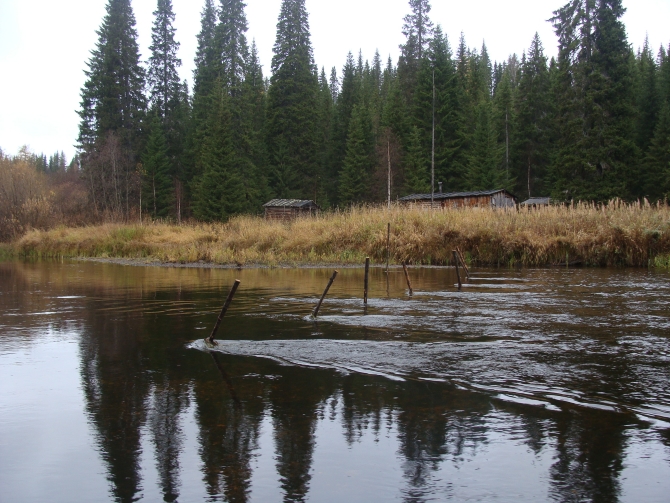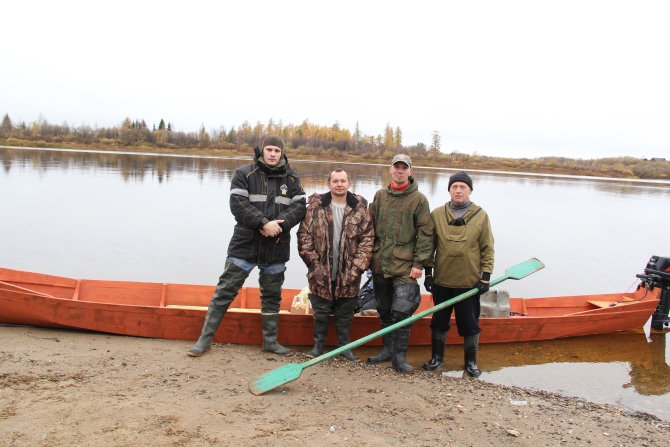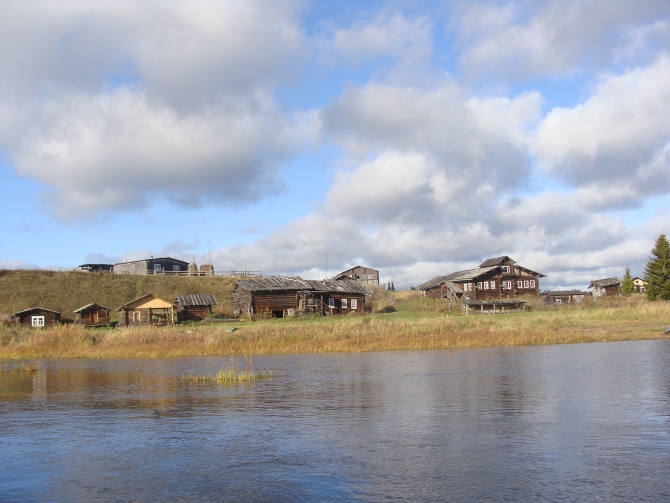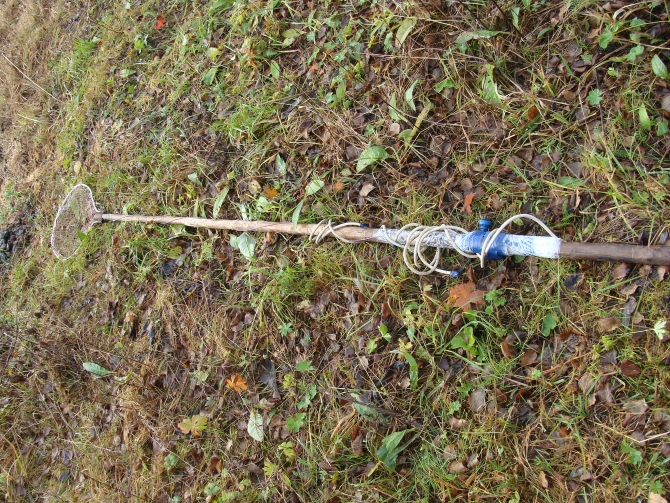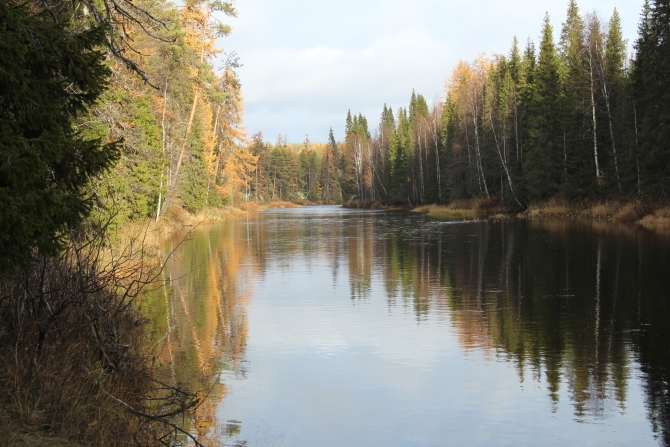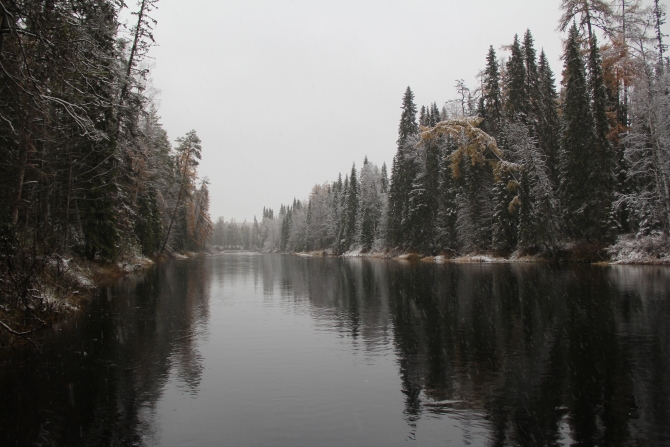Silver Taiga and Partners Inspect Salmon Spawning Grounds in the Udora District
The first week of October has witnessed a traditional annual expedition devoted to the Mezen salmon spawning grounds monitoring. This is already the fourth consecutive year that an autumn redds accounting – accounting of the spawned-out Atlantic salmon – using uniform methods has been conducted.
The monitoring is carried out with the involvement of partner organizations. This year, besides the Silver Taiga employees Nikolay Shilov, Nikolay Shuktomov, Alexander Borovlyov and Sergey Davydov, the expedition participants included the Head of the Udora division of FSBI “Komirybvod” Alexey Lenkov and the Head of the Udora district Environment Protection Committee of the Ministry of Nature of the Komi Republic Nikolay Krivushev, a senior expert of the SPNA department of the Republican Centre of Specially Protected Natural Areas Maxim Zakharov, an inspector of the Department of state control, supervision and protection of aquatic bioresources in the Udora district Mikhail Vlasov, a representative of the indigenous people community “Udorachi” and member of the Model River Mezen Working Group Albert Loginov and a volunteer Sergey Butorin.
The redds accounting has been conducted in the upper reaches of the Mezen and its tributaries Upper and Lower Puzla, Yolva Mezenskaya and Pyssa – on the same areas as in previous years. This time, thanks to the high water, the expedition members having split into groups (rivers), managed to pass all areas with the total length of 200 km.
In total, 111 hills and 13 pits (holes made by salmon in order to lay eggs there: having performed an egg laying to the pit, the salmon covers it with a pile of pebbles, forming a “hill’) have been detected. Thus, the greatest part of the salmon having reached the spawning grounds managed to spawn, also thanks to the high water and cool weather. However, the “hills” distribution is uneven. For example, filling up of the salmon spawning grounds on the Upper Puzla is much higher than on the Lower Puzla, which is much more accessible for the fish “hunters”, chasing this valuable fish. On the Pyssa the expedition participants have detected only one hill – only one salmon “redd”. However, they have detected plenty of poaching fishing gears, including an electric fishing rod. It appears that low filling-up of the spawning grounds on these tributaries – given other conditions being equal – is mainly determined by a high pressure on the part of people and illegal fishery. Unfortunately, it does not reduce from year to year.
As a positive point, the expedition participants note the fact that the river is patrolled by fishing inspectors. Besides, this year the places around the forest huts and recreation spots along the river were much cleaner than in previous years, probably, thanks to summer pupils ecological expeditions under the motto “Let’s protect the Mezen from rubbish!”
The photos are made by Alexander Borovlyov and Sergey Davydov

